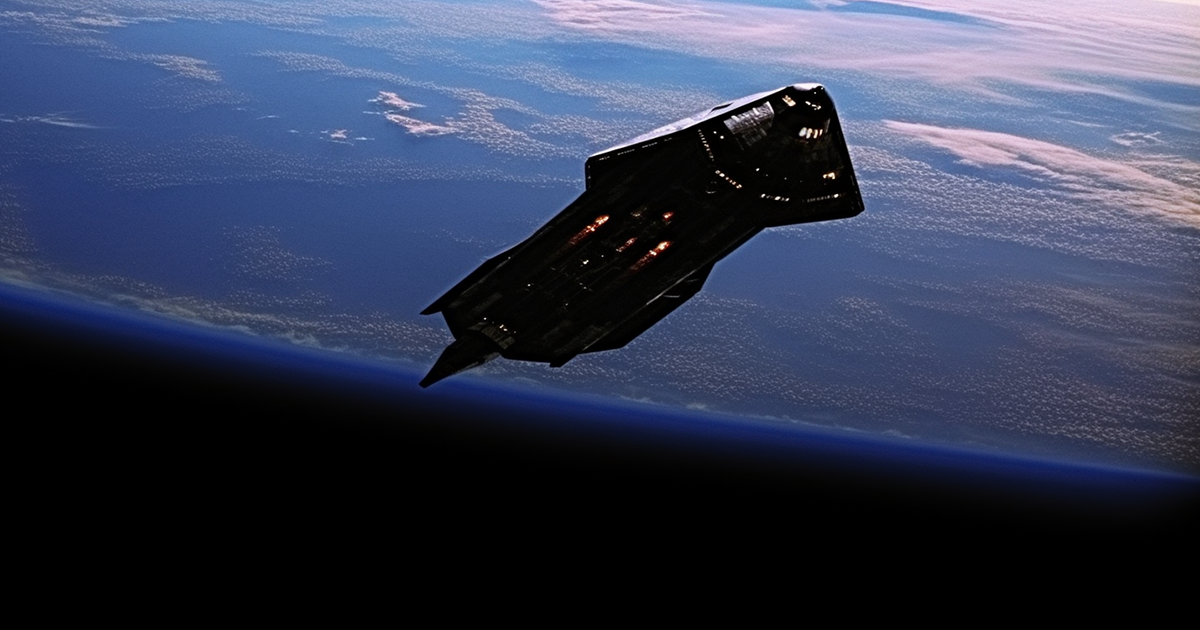Within the vastness of the universe, where our comprehension is often overshadowed by the enigmatic secrets of space, a celestial puzzle exists that has fascinated both scientists and conspiracy theorists.
An unusual entity, first sighted by astronauts during a space shuttle mission in December 1998, remains a puzzle that defies conventional interpretation. Amidst a realm dominated by spherical satellites and spacecraft, this irregular shadow in the abyss of space leaves observers puzzled.
This cosmic anomaly rose to prominence when the crew of the Endeavor space shuttle, on a mission to construct the International Space Station, stumbled upon an object that deviated from the norm. Its unconventional shape and dark hue set it apart from the expected cosmic debris. It seemed as though this object had been meticulously crafted to blend seamlessly into the darkness of space.
Documented in photographs captured by the astronauts, this mysterious presence sparked a wave of speculation. Some, driven by their fascination with extraterrestrial life, hastily labeled it as an alien spacecraft or a flying saucer. Nevertheless, the very essence of this celestial entity challenged conventional wisdom.

Ordinarily, satellites exhibit spherical or man-made designs. However, the enigmatic object in question unveiled an array of perplexing angles and curved edges that seemed beyond human engineering capabilities.
When NASA eventually provided an explanation, it was rather mundane. According to the space agency, this mysterious object was simply a thermal cover that had accidentally detached from the space station during construction.
Despite this seemingly simple resolution, skepticism persisted. Could a mere thermal cover give rise to such a distinctive and confounding form against the cosmic backdrop?
Enter the Black Knight satellite, a term now synonymous with this enigmatic presence in Earth’s orbit. The origins of this appellation remain shrouded in mystery. Despite extensive investigations, the exact origin of the term “Black Knight” remains elusive.
However, in 1954, a prominent U.S. newspaper featured a story about Donald Kehoe, a renowned UFO investigator. Kehoe asserted that an extraterrestrial object was navigating Earth’s orbit, a creation not of human origin.
The Black Knight satellite embodies one of the enduring mysteries of the cosmos. The prevailing hypothesis posits that it functions as a silent sentinel in space, an observer with an unknown mission. But what could that mission entail?
Speculations propose that it may be surveilling our planet, akin to wildlife documentaries observing animals in their natural habitats, oblivious to the camera’s lens. If indeed Earth is under scrutiny, then this satellite could be tasked with collecting and relaying information about us to an alien civilization.
Interestingly, our own forays into space offer a parallel narrative. As we launch missions to explore Mars and dispatch probes to the farthest reaches of our solar system, we engage in cosmic observation as well.
In essence, are we not mirroring the activities of a hypothetical extraterrestrial society? Could it be that our pursuit to comprehend the universe inadvertently mirrors the behaviors we speculate alien beings may undertake?
Some scientists advocate for an alternate approach to cosmic observation, one involving monitoring Earth from a far greater distance. Distant asteroids, known as co-orbital objects, provide a discreet vantage point. These objects resemble Earth satellites such as our moon but are positioned much farther away.
Discovered only twenty years ago, these co-orbital entities remain a subject of investigation. Their true nature eludes us. Positioned approximately 3 million miles from Earth, the closest co-orbital object offers an inconspicuous and distant perspective ideal for clandestine observation.
Video:
The conundrum of the Black Knight satellite persists, its true essence and purpose veiled in cosmic ambiguity. Although we may never definitively decipher the enigma of this cosmic anomaly, it stands as a testament to the profound mysteries that beckon to us from the vastness of space, challenging our knowledge and sparking our imaginations.
